The VE Design team held another think tank session on November 15, to provoke and provide new ideas on improving the quality of vocational education.
The topic this month focused on student motivation and engagement and the proposed question to the panellists was:
What are the best methods or strategies that can be used to engage and motivate students in the changing world of VET, industry and skills training?
The panel experts included:
- Naomi Holding – General Manager of Didasko Group
- Justin Cruickshank – Design and Production Manager of The Learning Hook
- Mark Newhook – Teacher at Box Hill Institute
- Tony Valance – Learning Specialist at Department of Education and Training Victoria
Naomi Holding – Didasko Group
To tackle the issue about student motivation, Naomi looked at what interferes with a student’s motivation in the first place. Some of the key factors Naomi has observed are anxiety, self-doubt, busy lives and boring subjects.
To help combat this, Naomi and the team at Didasko use the 4MAT learning and communication tool (shown below) to structure their courses.
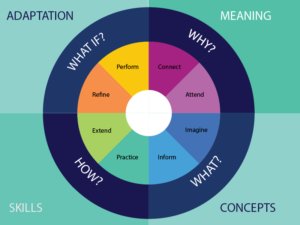
Why? – Why is the student doing the course? This gives personal meaning making sure they’re correctly matched to a goal.
What? – What is the content? This ensures that the course is providing interesting and relevant content
How? – Refers to the application which includes allowing time for the student to practice and get feedback and to provide real life
What if? – Factors in students to have creativity and curiosity for the course.
Naomi then asked, “Who drives effort”?
Naomi explained that responsibility to drive effort doesn’t come down to one teacher. It is everyone’s responsibility, from the instructional designers, to student support, to the students themselves. The responsibility also begins well before a student selects their course. If a student is not interested in the subject matter to begin with then it’s going to be difficult to motivate them.
Once motivation has been established, the next challenge is to sustain it.
Naomi used the examples of gamification (which sets goals, rules and feedback for the learner to help theme stay engaged) and story-telling, to help students process and retain information as strategies to keep students motivated.
Naomi concluded by saying motivation comes down to having motivated and passionate staff that want to see their students do well.
Justin Cruickshank – Learning Hook
To tackle the problem of motivating students and maintaining their interest, Justin Cruickshank and the team from the Learning Hook use Keller’s ARCS model of motivation to help structure their courses.
Justin first looked at past and present trends for delivering information.

ARCS
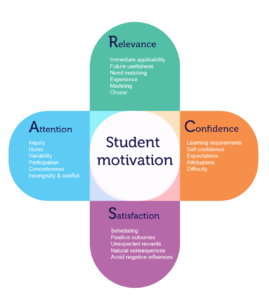
He then explained how the Learning Hook uses Keller’s ARCS model throughout their planning and development stages of a course to ensure student motivation and engagement throughout the course.
To test the theory, Justin provided a few examples of current trends and matched them accordingly to the Keller’s ARCS model.
Microlearning
By delivering information in short chunks allows students to straight to the relevant topic that they want to learn. It also gives the student control of their own learning.
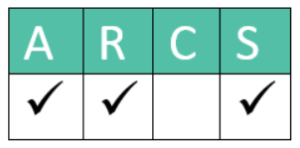
Gamification
Gamification requires participation from the student. Games are generally fun and with a scoring system, students can get immediate feedback to boost their confidence.
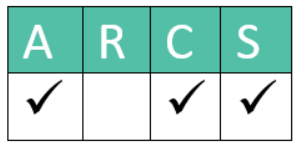
Chatbots
Chatbots engage in dialogue and provided instant feedback to students making the interaction relevant, engaging and the instant feedback provides confidence for the student.
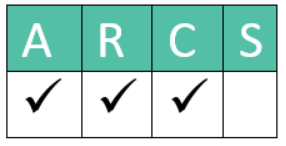
Following these steps during the design phase of a course can help learning designers measure where different learning trends or methods might fit into a course to ensure that its engaging and motivating for the student throughout the entire course.
Mark Newhook – Box Hill Institute
Mark talked about his methods to keep students motivated and engaged in practical and onsite learning environments. Mark has observed that this type of setting creates a competitive environment where students try to outdo each other.
Another strategy that Mark found to be successful is to encourage students to find their own interpretations of the course material. This encourages problem solving and self-direction. Mark explained that once a student has resolved the problem, the knowledge becomes their own and it is likely to stay with them longer than if they had copied the solution from a resource.
Mark is currently completing a Doctorate in Education at La Trobe University. From his focus group of third year apprentices, Mark learned that a driving factor for their motivation to come to class is to learn and share information with other students.
Mark also highlighted the importance of providing a safe and supportive environment to help keep students motivate. Mark also described how interns earn low wages but are expected to perform highly. If they make a mistake at work, they risk having their pay docked. Whereas TAFE students are provided an environment where they are not punished for making mistakes and are, instead, guided by the teacher on how to resolve the mistakes they have made.
Mark concluded by highlighting the importance of teachers needing the ability to design the resources, the ability to deliver the information, as well as a sound understanding of the trade and industry.
Tony Vallance – Department of Education and Training Victoria
Tony Vallance is a Learning Specialist at Lilydale High School and has developed an engaging learning method for high school students in the subjects of science, technology, engineering, arts and mathematics (STEAMWorks).
Tony believes a key factor to sustain a student’s motivation, is the teacher’s connection with that student and ability to engage with them. This connection encourages students to believe in themselves and build confidence.
Like Mark, Tony raised the importance of allowing students to take ownership of their learning and to encourage creative and critical thinking. He stated that it’s not the space that matters but it’s the culture, community and connection that counts.
Tony noted that students are often not part of the design and development part of a course and would like to see institutes include more collaboration with students when it comes to designing a course.
Tony also pointed out the importance of creating a culture where failure is ok and stated that it is important to provide a safe and supportive environment to allow students to learn from their mistakes.
Conclusion
Although our four guests came from different educational areas, there many crossovers with the strategies and objectives they apply to design engaging courses and keep their students motivated. It was inspiring to see the motivation and passion that they all the panellists have for their students.
Thank you to all the panellists for taking the time to share their insight into keeping students motivated.


